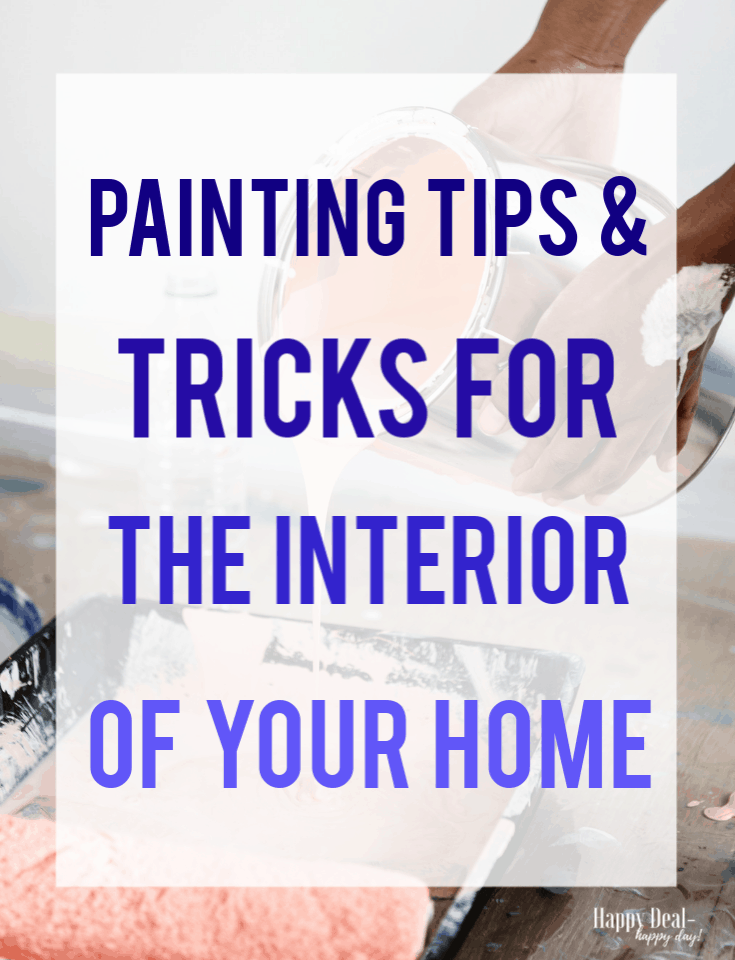*This is a sponsored post. All opinions are my own!*
I recently finished painting my kitchen cabinets (post coming soon of my before and after pictures!). Last summer I painted my bathroom vanity. So I decided to give out some helpful painting tips that I may have previously have known before, but wish I was fully reminded about before I tackled these projects!
Painting any room is a simple and cost-effective way to update a property. But sometimes you forget the details of what you need to make the job look professional. Truth is, you are going to get paint on you, the quality of the brush matters, there is always prep work to do that you may have forgotten to schedule time in for, and clean up can be a pain. So take a look at these tips so you can be fully prepared to tackle this doable project that will be so worth it when you are done!
Wearing the Proper Garb
Start your project with the proper clothing. Painter’s coveralls are a great idea to keep all of your clothes clean and free from rogue marks. Of just wear grubby cloths that you don’t care get paint marks on them forever. Gloves and respiratory masks are also smart additions to your project (especially if your paint is not VOC free or you are using a stain or polyurethane!). Painting isn’t difficult, but it is messy and produces some fumes. If you’re sensitive to any chemicals, the mask and gloves will be your favorite items during the project. One last tip is that if you are on the floor a lot during a painting project – get some knee pads! It makes a world of difference!
Filling and Sanding the Holes
There will always be some holes where you want to paint. They might be divots or drill holes, for instance. Use patching compound (like wood filler) in order to fill those holes. Once they’re dry, sand them as smoothly as possible. You may have to wait an extra day for these to dry and sand before you can paint – so be sure to account for this when planning out your project schedule timeline. It will be worth it though, because after painting over these filled holes, no one will ever know they were there to begin with!
Cleaning the Surfaces
Always clean the surfaces to be painted. Grease, fingerprints and other films adhere to every surface in the home. Painting over dirty surfaces will only lead to peeling paint. Use a rag with an appropriate cleaner in order to achieve a professional paint job. Grab your favorite microfiber cloth (like Norwex) that will do a phenomenal job and removing grease and fingerprints without having to use spray cleaner!
Masking the Edges
Every edge or transition point should have masking tape applied to it, such as items from Trimaco products. The tape acts as a barrier to any painting marks that might stain the wrong area. Wall corners and edges, for example, are where you need to apply the tape. Press it down as hard as possible, and the paint won’t seep through. The tape comes off with ease afterward. If you have a thick coating of paint on the tape, you may sometimes need a utility knife to get the tape to come off with a clean edge.
Painting Like a Pro
Use rollers for large areas, such as the walls. Sponge brushes are perfect for those details, including door frames or kitchen cabinet doors. Fill the brush or roller up with enough paint to spread out on the surface. Start out by moving the paint in several directions across the wall or ceiling. Continue to spread it out without loading the brush or roller again. You’ll have even coverage with this strategy.
Also, be sure to read on the paint can the proper amount of time to wait in between coats. Have patience and really follow the suggested time – otherwise you risk messing up all of your hard work (think about a manicure and if you put on a new coat of polish too soon – you end up having to re-do that entire nail! Don’t do the same thing with an entire wall!)
If you are using the paint over a few days, wrap your brush or roller in damp paper towels and tie in a plastic bag. That way it won’t dry out, and you won’t have to wash it out at the end of each day.
Best Time To Paint
The ideal day to paint is when you can have all of the windows open with minimal humidity and moderate temperatures. The paint has a chance to adhere and dry against the surfaces without remaining too tacky overnight. Your paint job lasts longer as a result. That may be easier said than done since the time you have to work may not match with the weather. If conditions are extra humid, I’d wait longer in between adding coats of paint to be sure it is fully dry.
What about you – what are your favorite painting tips that I didn’t mention? Leave some in the comments!










